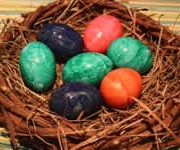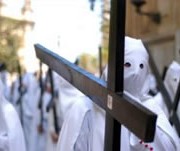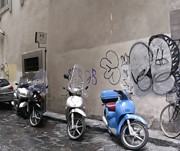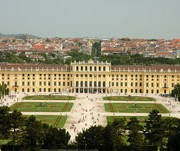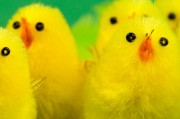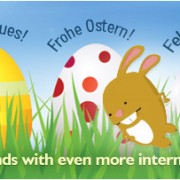Church bells are silent from the day before Good Friday to Easter Sunday when they ring out again. The bells are said to go to Rome to see the Pope, and then return with Easter eggs, which are hidden in houses and gardens for children to find. Other traditional Easter foods include lamb, goat and special Easter breads such as Panettone, Colomba Pasquale, Fugazza Vicentina, Pizza di Pasqua and Fiadoni.
Religious processions are held in many Italian towns and cities on Good Friday, Easter Saturday and sometimes on Easter Sunday. They often involve statues of Mary or Jesus being paraded through the streets by people dressed in medieval costumes while olive branches or palm fronds are waved by the spectators, and are used to decorate the churches.
In Florence’s historic centre (centro storico) the Easter celebrations, known as Scoppio del Carro (explosion of the cart), involves a large 17th century cart being pulled through the streets by a team of white oxen, which are decorated with garlands. The precession goes to the square outside the Basilica di S. Maria del Fiore, where they hold mass. After the service the Archbishop lights a dove-shaped rocket which goes down a wire and hits the cart in the square, setting off fireworks. The idea is that the loud explosions will ensure a good harvest. Following on from that is a parade of people dressed in medieval costumes.
Processions are held all over Sicily to celebrate Easter. For example, in the Sicilian town of Enna a procession of two thousand friars dressed in medieval costumes is held on Good Friday, while in Trapani, statues made by local guilds are carried through the streets in a procession that lasts 24 hours. In Prizzi, south of Palermo, some of the people dress up as devils with red and black masks, horns and grotesque noses and they go through the streets trying to persuade spectators to buy them drinks. At the same time other people dress as angels and stage a symbolic struggle with the devils, who are defeated and have to buy drinks for everyone.
In Sulmona in the Abruzzo region people dress in green and white on Easter Sunday and gather in the main piazza. The woman playing the Virgin Mary is dressed in black at first, but after she goes to the fountain and doves are released, her outfit changes to colour to green. After this there is music and much eating and drinking.
In Rome on Good Friday the Pope celebrates the Via Crucis in Rome near the Colosseum. A huge cross with burning torches lights the sky as the stations of the cross are described in several languages, and the Pope gives a blessing after this. On Easter Sunday the Pope celebrates mass at St Peter’s Basilica.
On Easter Monday (La Pasquetta), there are dances, free concerts and games, often involving eggs. One game, Ruzzolone, is played in Panicale, a small town in Umbria, and involves rolling large cheeses are the walls of the village. The winner is the person who gets their cheese around the walls using the fewest strokes from a stick.
Cactus Language offer a variety of Italian language courses in the UK, New York and Italy.

